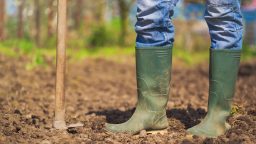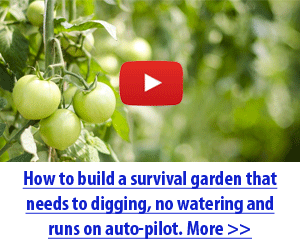Growing your own fruits and vegetables is much easier when you have great soil. If yours is filled with too much clay, is infiltrated by tree and shrub roots, or has nutritional deficiencies, then you won’t be able to produce as many of them as you’d like. Or, you could end up with great quantities of fruits and vegetables, but they won’t be very large. Either way, your plants will struggle. The best thing that you can do in order to reverse this is by improving the overall quality of your soil. There are several useful (and fairly simple) methods to do this. Here they are.
Use a Cover Crop That Adds Nutrients
Some crops are called “cover crops” because they add nutrients to the soil when they are allowed to break down and cover it. (After they’re grown in that same soil, of course.) These cover crops, including buckwheat and clover, can be planted during the off seasons. They’ll stay alive through winter and early spring, and then, when you’re ready to till your garden, just plow the plants into it. Not only will they act as mulch, but they’ll help enrich your soil.
Turn Your Perennials Into Mulch
Adding mulch to your soil does much more than keep it warm, ensure that it stays moist, and prevent weeds from taking root. It also adds some nutrients to the soil. What you can do in order to make your own mulch (or at least, enhance the type that you buy) is chop up any trimmings from your perennials and add them to it. Things like shrub trimmings, bits of perennial plants, and even small branches pruned from your trees all can be added to your mulch. As they break down, they’ll help your soil’s nutritional content.
Allow It to Dry Out Before Tilling
Sure, it’s good to plant your crops after rain, because the soil is nice and moist. This doesn’t mean that you should till it at this point though. Instead, wait until your soil has dried out, and then till it up. Otherwise, you risk taking all of the oxygen out of the soil and damaging its overall structure. You won’t be able to grow as much in this damaged soil. It’s best to test your soil by grabbing some of it with your hand and squeezing before you bring out the rototiller. If it crumbles into dust in your hand, then it’s time.
Related Article: 4 Critical Methods to Improve Your Garden Soil
Test Your Soil and Then Add To It
One of the best ways to improve your soil quality is by testing it, and then adding in what it appears to be missing. There are test kits on the market that can tell you what your soil is lacking. They are easy to use, as most involve placing a scoop of soil in a test tube and then adding some chemicals to it. If you want results that are more detailed than that, you can purchase the type of test kit that you need to send out to a lab. You’ll get your results in a few weeks.
Suggested Article: How to Test Your Soil Using Only a Mason Jar
After you find out what your soil is lacking, you can add that exact compound to it. For example, if it lacks nitrogen, just add some organic fertilizer that contains nitrogen to it. The test results might also include some suggestions for improvement, and give you the names of a few products that you can use. However, this depends on the exact test. No matter what, you’ll know exactly how to improve your soil in order to grow the best crops possible. That’s what every homesteader wants.



